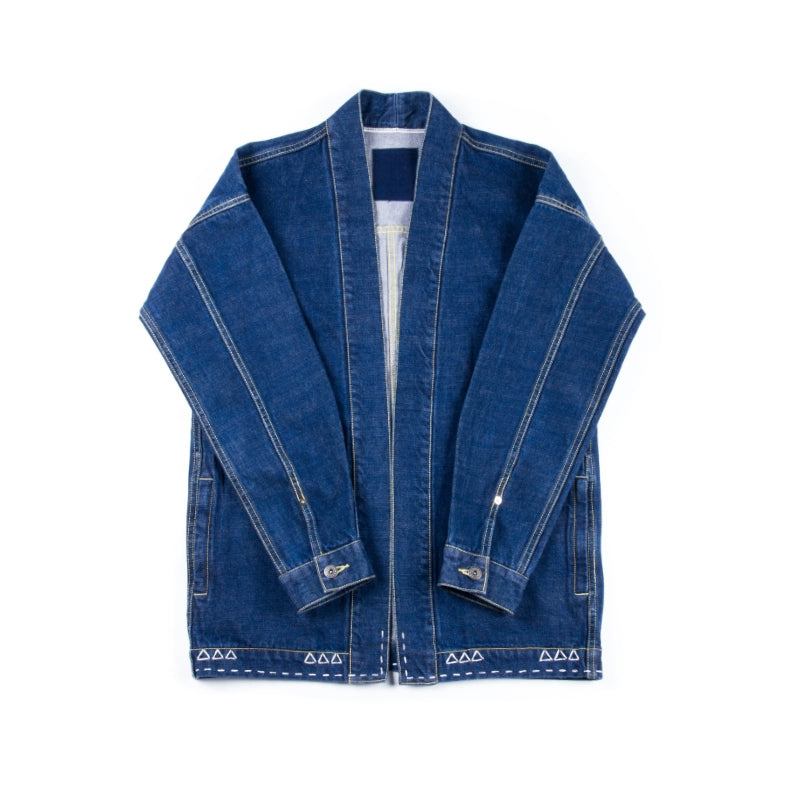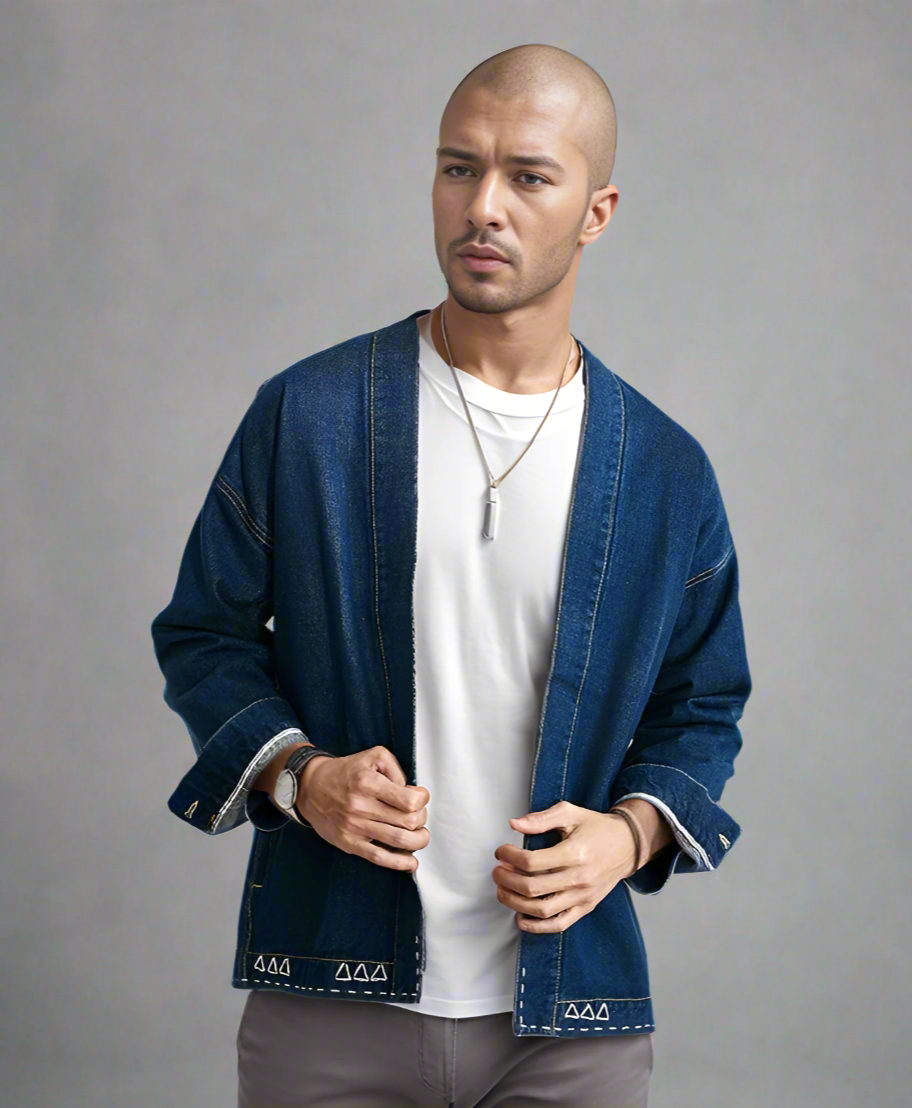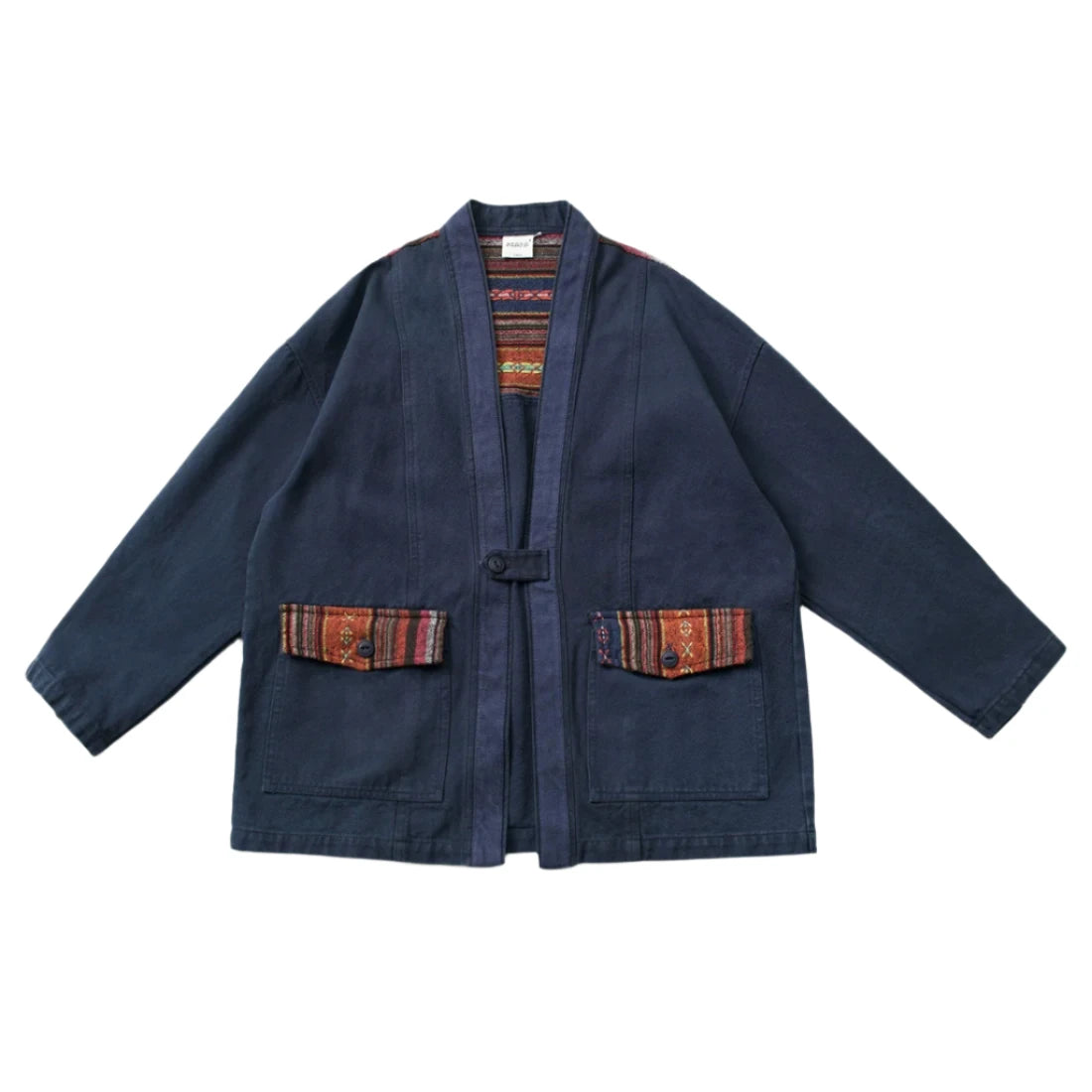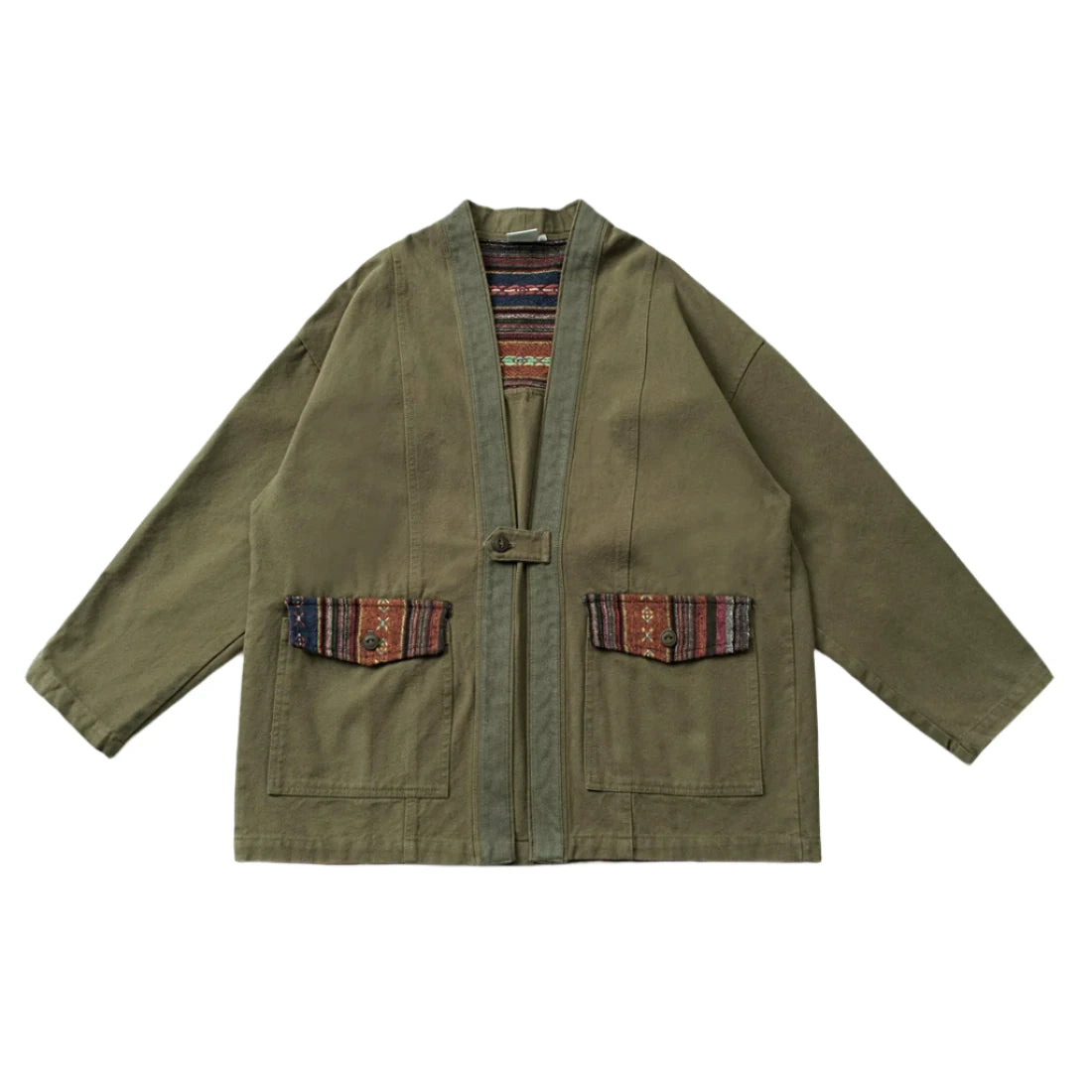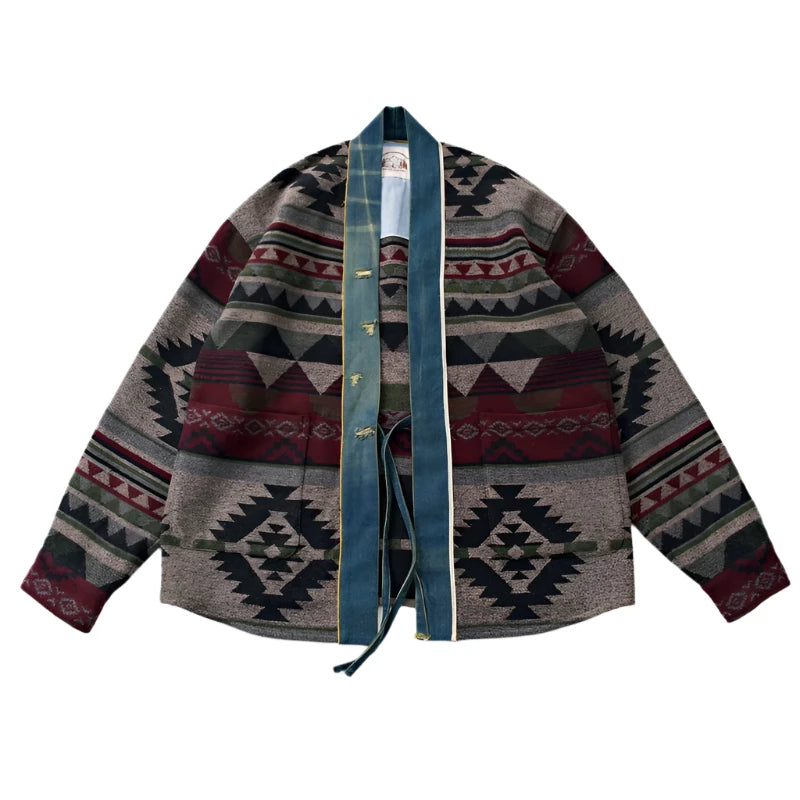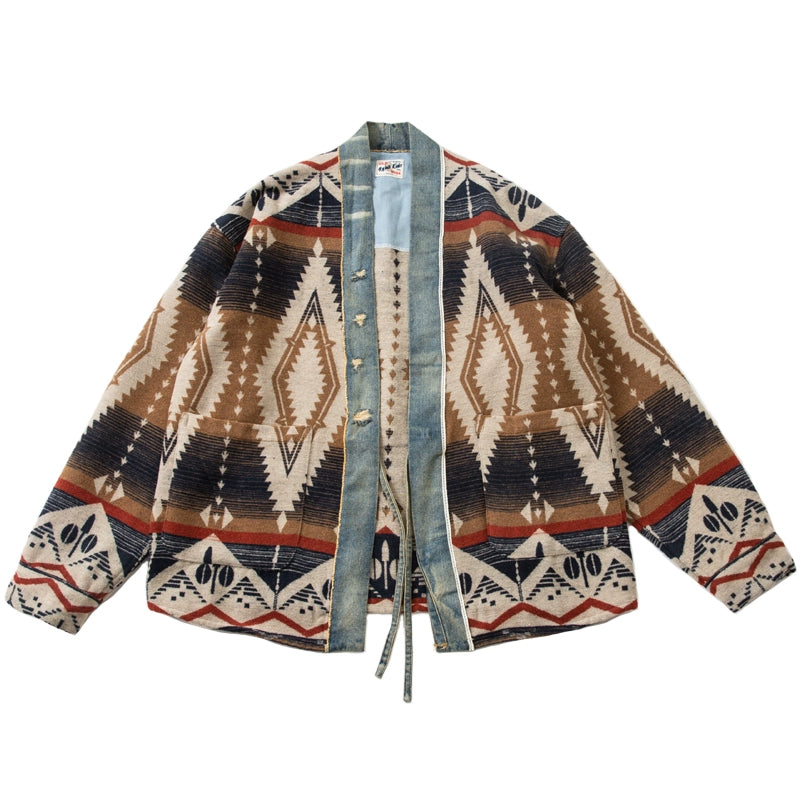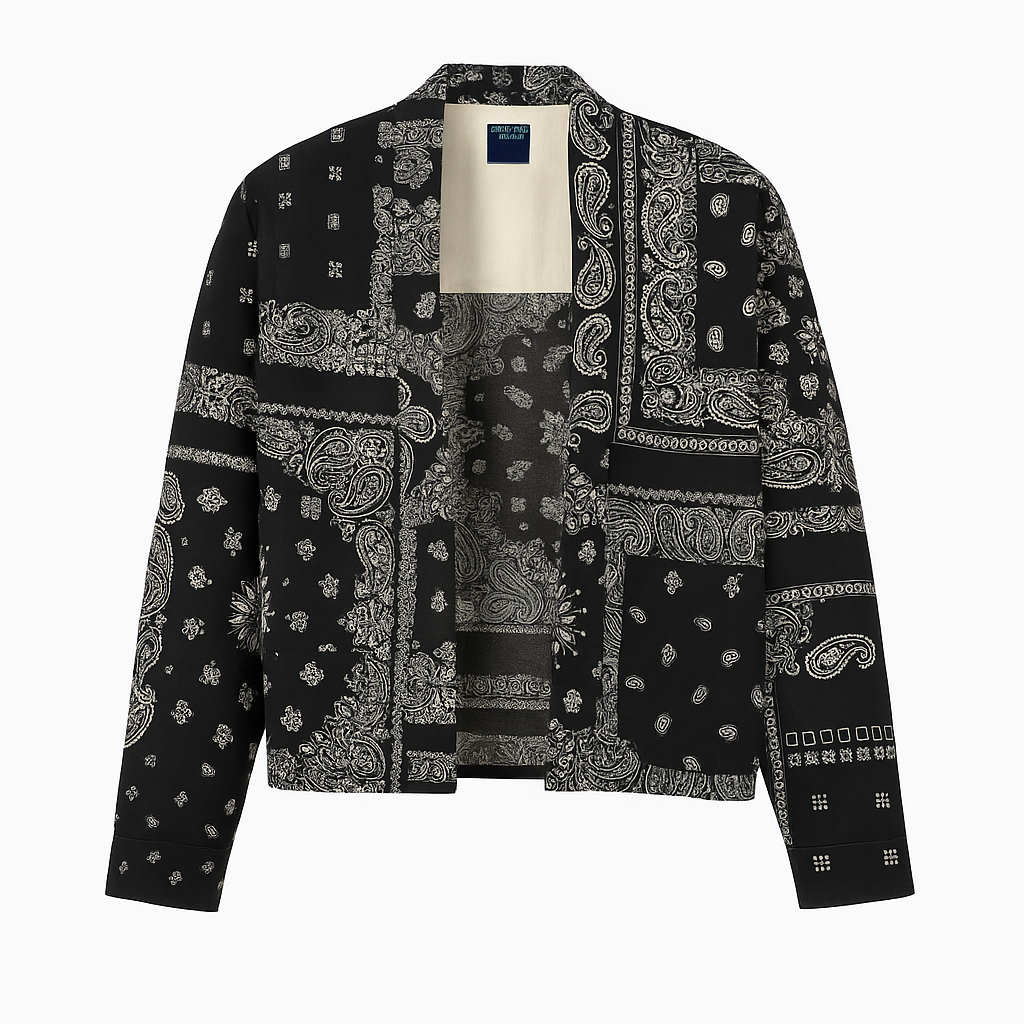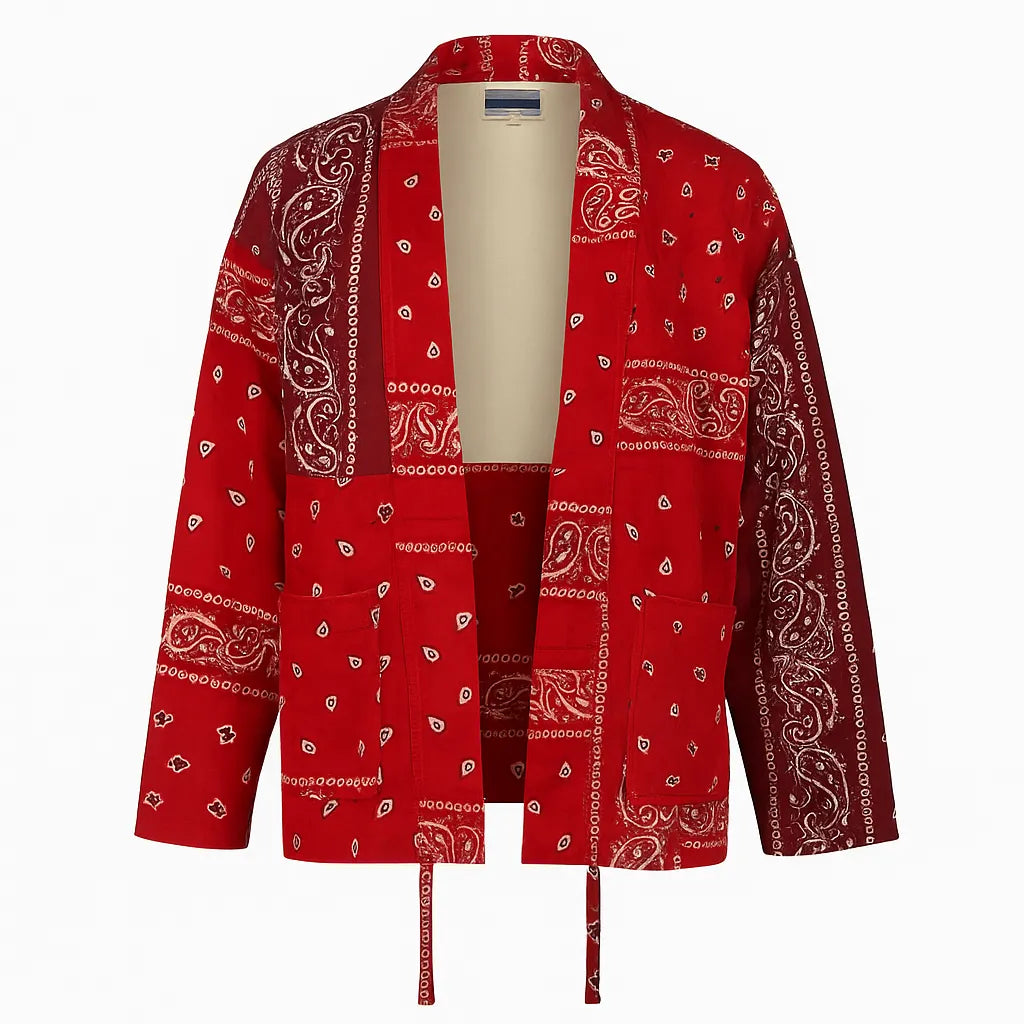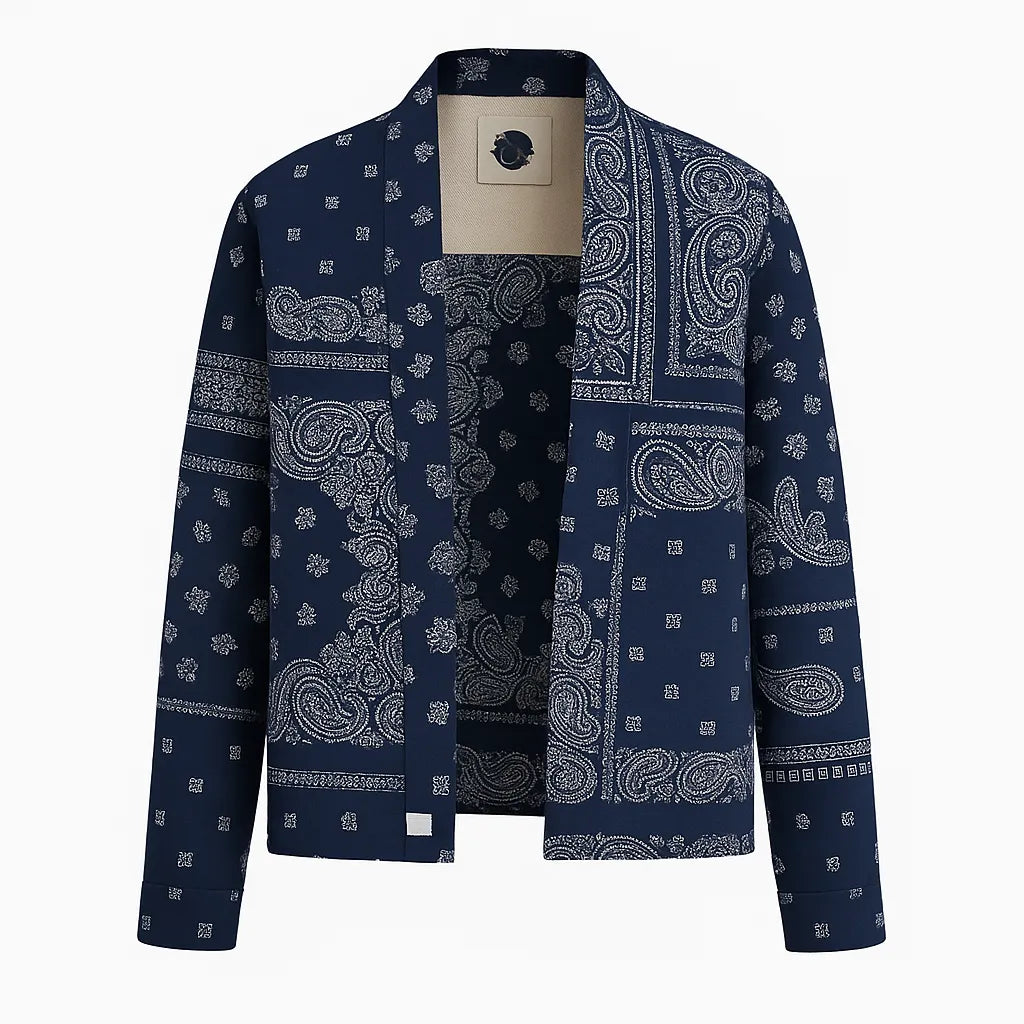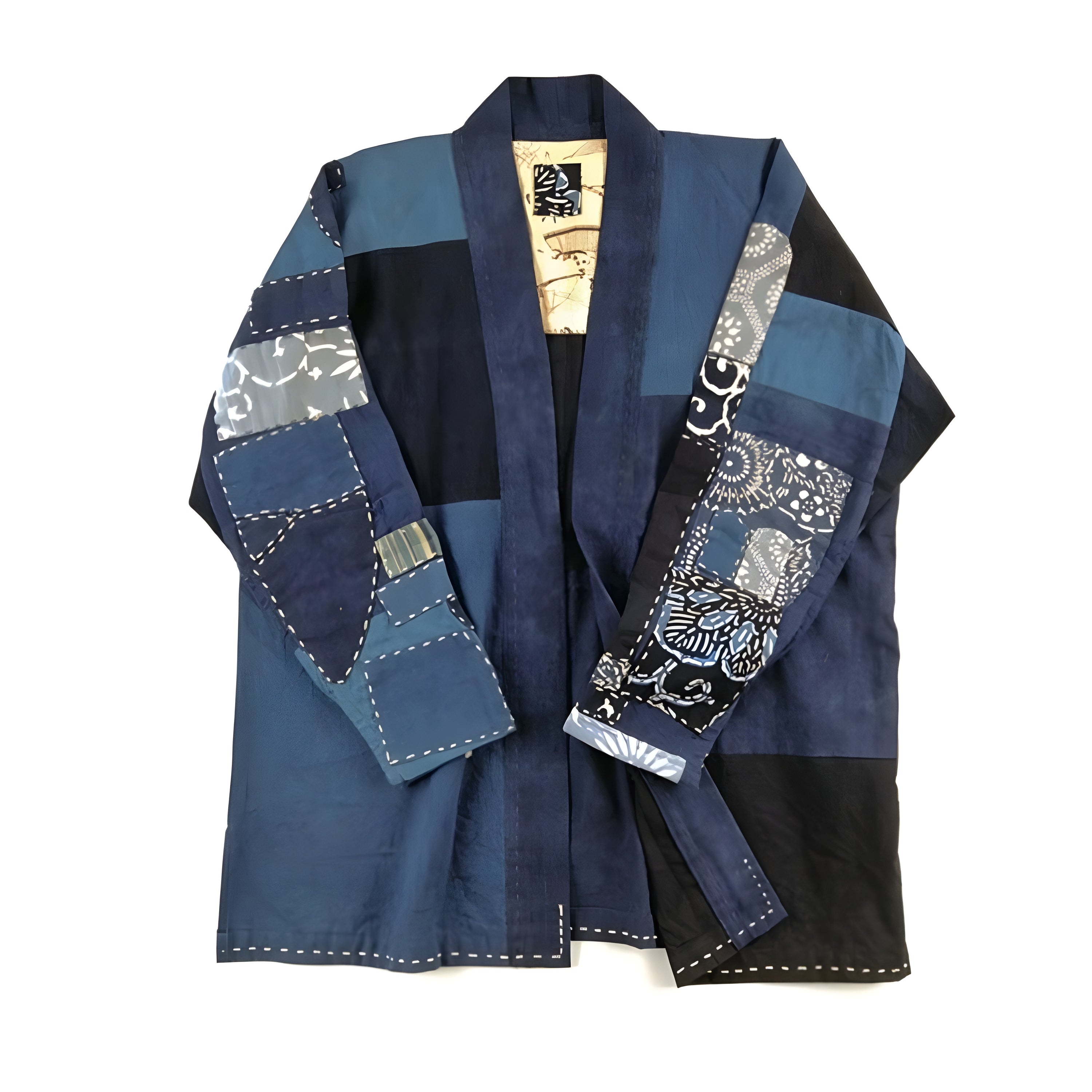Denim Noragi: A Complete Guide to Japanese Workwear's Modern Evolution
Looking to add a unique Japanese-inspired piece to your wardrobe? The denim noragi offers a perfect blend of traditional Eastern design and modern Western workwear. This versatile garment combines the casual comfort of Japanese farm clothing with the durability and style of classic denim.
Originally worn by Japanese farmers and craftsmen, the noragi has evolved from its humble hemp or cotton origins into a contemporary fashion statement. Today's denim version maintains the signature wrapped front, loose fit and practical design while incorporating the rugged appeal of everyone's favorite fabric. You'll find these jackets appearing more frequently in street style photos and fashion-forward collections, making now the perfect time to explore this distinctive clothing option.
What Is a Denim Noragi? Japanese Denim at its Peak
A denim noragi combines traditional Japanese workwear design with premium Japanese denim fabric. The garment features a wrapped front closure tied with fabric strips, wide sleeves, and a relaxed silhouette that allows unrestricted movement.
Key characteristics of denim noragi include:
- Raw selvedge denim construction from Japanese mills like Kojima or Okayama
- Traditional crossed lapels secured by fabric ties or buttons
- Three-quarter length sleeves with wide openings
- Multiple practical pockets for storage
- Boxy, oversized fit that hangs loosely on the body
- Indigo dyeing techniques creating rich blue hues
Modern denim noragi adaptations incorporate these design elements:
- Reinforced stitching at stress points
- Hidden interior pockets
- Adjustable sleeve cuffs
- Contemporary wash treatments
- Chain-stitched hems for durability
The fabrication process involves:
| Production Element | Specification |
|---|---|
| Denim Weight | 12-16 oz |
| Weave Type | Right-hand twill |
| Thread Count | 60-80 per inch |
| Dyeing Method | Natural indigo |
| Construction | Single needle stitching |
Japanese denim makers craft noragi using shuttle looms producing narrow-width fabric with authentic selvedge edges. This manufacturing approach creates a robust garment that develops unique wear patterns through regular use.
The History and Origins of Japanese Denim
Japanese denim emerged in the post-World War II era, establishing itself as a premium textile through meticulous craftsmanship and superior production methods. The integration of ancient textile traditions with modern manufacturing techniques created a distinctive fabric that garnered global recognition.
The History of Japanese Denim
Japanese denim production began in Kojima, Okayama Prefecture, in 1965 when Kurabo Mills produced the first Japanese denim fabric. The region's textile heritage includes:
- Traditional indigo dyeing techniques passed down through generations
- Vintage shuttle looms salvaged from American mills in the 1950s
- Hand-crafted production methods focusing on small batch quality
- Natural indigo dye processes creating deeper color penetration
Companies like Kaihara Corporation pioneered innovations in:
| Innovation | Year | Impact |
|---|---|---|
| Rope Dyeing | 1970 | Enhanced fade patterns |
| Selvedge Weaving | 1973 | Self-finished edges |
| Zimbabwe Cotton Use | 1980 | Superior texture |
The Denim Evolution
Japanese manufacturers transformed basic denim into a premium product through:
- Installation of vintage Toyoda G-series shuttle looms
- Development of unique yarn-dyeing techniques
- Integration of traditional kasuri weaving methods
- Implementation of low-tension weaving for irregular textures
Key milestones include:
| Period | Development |
|---|---|
| 1960s | First domestic denim production |
| 1970s | Premium selvedge introduction |
| 1980s | International recognition |
| 1990s | Artisanal denim movement |
- Advanced synthetic indigo dyes for consistent coloring
- Specialized finishing treatments for unique wear patterns
- Sustainable production methods reducing water consumption
- Custom cotton blends for enhanced durability
Key Design Features of Denim Noragi
The denim noragi combines essential traditional Japanese design elements with modern construction techniques. Each feature serves both aesthetic and functional purposes, creating a versatile garment that honors its workwear heritage.
Traditional Elements Meet Contemporary Style
- Cross-over lapels with traditional ties at the front provide an adjustable fit
- Wide sleeves with reinforced arm openings allow unrestricted movement
- Drop shoulders create a relaxed silhouette characteristic of Japanese workwear
- Short length hits at hip level, perfect for layering over other garments
- Straight hem with side splits enhances mobility
- Modern metal snaps or buttons complement traditional fabric ties
- Heavy-weight raw selvedge denim (12-16oz) ensures durability
- Chain stitch construction at stress points prevents seam failure
- Bartack reinforcement at pocket corners adds strength
- Double-needle stitching creates clean, parallel seam lines
- Hidden interior pockets with waterproof lining protect valuables
- Exposed selvedge details on interior seams showcase fabric quality
| Construction Element | Specification |
|---|---|
| Denim Weight | 12-16 oz |
| Stitch Count | 12 per inch |
| Pocket Count | 4-6 pockets |
| Seam Type | Flat-felled |
| Button Type | Aged brass/copper |
| Thread Weight | #50 industrial |
How to Style a Denim Noragi
A denim noragi creates versatile layering opportunities for both casual and refined outfits. Its distinctive Japanese-inspired design adds a unique element to contemporary wardrobes while maintaining practicality.
Casual Everyday Looks
The denim noragi pairs seamlessly with casual staples for effortless daily wear:
- Layer over a plain white t-shirt with relaxed-fit chinos for a balanced silhouette
- Combine with dark selvedge jeans using contrasting denim washes for visual interest
- Match with cargo pants or work pants to enhance the workwear aesthetic
- Add canvas sneakers or leather work boots to complete the utilitarian look
- Roll up the noragi sleeves to showcase layered cuffs or a watch
- Incorporate graphic tees for added visual interest while maintaining the casual vibe
- Pair with tailored wool trousers for a high-low fashion statement
- Layer over a light turtleneck sweater with cropped pants for modern refinement
- Match with monochromatic pieces in black or navy to create a sleek profile
- Combine with oxford shirts tucked into formal trousers for business casual settings
- Add leather loafers or minimalist leather sneakers for polished footwear options
- Integrate textured knits like merino wool or cashmere for luxurious depth
Popular Denim Noragi Brands and Makers
Leading denim noragi manufacturers combine traditional Japanese craftsmanship with contemporary design elements. These brands range from established Japanese heritage labels to modern international designers specializing in innovative workwear interpretations.
Japanese Heritage Labels
- Kapital creates distinctive denim noragi featuring vintage-inspired boro patchwork details sashiko stitching with a 14oz selvedge denim base.
- Blue Blue Japan produces indigo-dyed noragi using shuttle-loomed denim from Okayama mills with traditional tie closures hand-sewn details.
- Studio D'Artisan offers limited-edition noragi made from 12oz raw Japanese selvedge denim with custom-engraved metal hardware heritage details.
- Momotaro Jeans crafts noragi using their signature 15.7oz Zimbabwe cotton denim with pink selvedge lines battle stripes.
- Pure Blue Japan specializes in slub texture noragi using proprietary rope-dyed indigo denim with copper rivets custom buttons.
- 3sixteen produces American-made noragi using Kuroki Mills denim with brass snap closures reinforced pocket bags.
- Rogue Territory offers modern noragi in 13oz sanforized selvedge denim with updated fit streamlined details.
- Visvim creates premium noragi blending Japanese American workwear elements using aged wash techniques custom hardware.
- Story MFG focuses on sustainable denim noragi using natural indigo dyes organic cotton with hand-finished details.
- Naked Famous designs contemporary noragi incorporating unique fabric blends specialty denim weights with modern closures.
| Brand | Signature Feature | Denim Weight | Price Range |
|---|---|---|---|
| Kapital | Boro patchwork | 14oz | $400-600 |
| Blue Blue Japan | Hand-dyed indigo | 13oz | $350-500 |
| Studio D'Artisan | Custom hardware | 12oz | $300-450 |
| 3sixteen | Brass snaps | 14.5oz | $250-400 |
| Story MFG | Natural indigo | 12oz | $350-500 |
Caring for Your Denim Noragi
Initial Care Instructions
Raw denim noragi jackets require 6 months of wear before the first wash to develop unique fade patterns. Turn the garment inside out before washing at 30°C (86°F) with minimal agitation. Avoid using fabric softeners or harsh detergents that break down the cotton fibers. Hang dry in shade to prevent uneven fading or shrinkage.
Regular Maintenance
- Spot clean stains immediately using a damp cloth with mild soap
- Brush off surface dirt with a soft-bristled garment brush
- Air out the noragi after each wear to maintain freshness
- Store on wooden hangers to maintain shape between wears
- Remove items from pockets to prevent stress on seams
Washing Guidelines
| Washing Method | Temperature | Frequency | Special Notes |
|---|---|---|---|
| Hand Wash | 30°C/86°F | Every 30-40 wears | Use specialized denim soap |
| Machine Wash | 30°C/86°F | Every 50-60 wears | Gentle cycle only |
| Spot Clean | Room temp | As needed | Use damp cloth |
Storage Tips
- Fold along original creases to prevent new wrinkles
- Use cedar blocks to absorb moisture in storage
- Keep away from direct sunlight to prevent fading
- Allow air circulation between garments
- Store in breathable garment bags for long-term protection
- Reinforce weak areas before holes develop
- Use sashiko stitching for visible repairs
- Apply darning techniques for small holes
- Replace broken buttons with matching hardware
- Strengthen loose seams with chain stitching
Conclusion
The denim noragi stands as a perfect fusion of Japanese heritage and contemporary style. Its blend of traditional craftsmanship with modern functionality makes it more than just a fashion statement - it's a versatile piece that'll serve you well for years to come.
Whether you're drawn to its rich cultural history or its practical design elements this garment offers something truly unique to your wardrobe. As Japanese denim continues to captivate fashion enthusiasts worldwide the denim noragi remains a testament to the enduring appeal of thoughtful cross-cultural design.
Your investment in a denim noragi isn't just about owning a piece of clothing - it's about embracing a garment that'll develop character and personal history with every wear.
Frequently Asked Questions
What is a denim noragi?
A denim noragi is a modern interpretation of traditional Japanese workwear, combining the classic noragi jacket design with durable denim fabric. It features crossed lapels, wide sleeves, and a loose fit, originally worn by Japanese farmers and craftsmen but now adapted for contemporary fashion.
What makes Japanese denim special?
Japanese denim is renowned for its superior quality due to traditional production methods, including vintage shuttle looms and unique rope-dyeing techniques. The meticulous craftsmanship, premium materials, and attention to detail result in denim that develops distinctive wear patterns and superior durability.
How should I style a denim noragi?
You can style a denim noragi casually with a white t-shirt and chinos, or dress it up with tailored wool trousers and a turtleneck. It works well with contrasting denim washes and can be layered for both casual and refined looks. The versatility allows for multiple styling options.
How do I care for my denim noragi?
Initially, wear your denim noragi without washing to develop unique fade patterns. When washing is needed, use cold water and mild detergent. Air dry the garment and store it on wooden hangers. Spot clean when possible and avoid frequent washing to maintain the denim's character.
Which brands make the best denim noragi?
Leading manufacturers include Kapital, Blue Blue Japan, Studio D'Artisan, and Momotaro Jeans. Each brand offers unique features like boro patchwork, hand-dyed indigo, and custom hardware. These brands combine traditional Japanese craftsmanship with modern design elements.
What are the key features of a denim noragi?
A denim noragi typically features cross-over lapels with ties, wide sleeves for mobility, and a relaxed silhouette with drop shoulders. Modern versions include reinforced stitching, hidden waterproof pockets, and heavy-weight raw selvedge denim construction (12-16oz).
